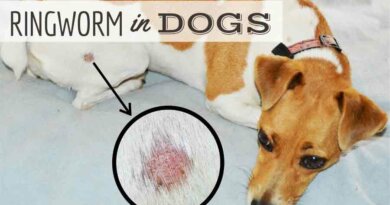Xylitol – Highly Toxic to Dogs
A friend recently had a terrible scare with a dog who ate a homemade cinnamon bun and got hideously ill; it turned out that the glaze on the bun was made with an artificial maple syrup that contained xylitol.
You may have heard that xylitol is toxic to dogs, and that you should never leave sugarless gum or mints that may have xylitol in them anywhere dogs can get them. (This includes in your purse or backpack, in the car, on your bedside table, or anywhere else your dog may have access to.) But are you aware how many MORE foods, medicines, supplements, and oral health products contain xylitol?
Xylitol, also known as “birch sugar” or ”wood sugar” (it’s made from birch and other wood products), is more and more commonly used in products for humans. It’s used in candies and baked goods meant for diabetics, as it sweetens foods in a way that does not cause an increase in a human’s blood glucose or insulin levels. But its use is not always called out as being appropriate for diabetics; increasingly, it’s used in regular baked goods, because it’s heat-stable (it doesn’t caramelize like regular sugar does).

It’s commonly found in:
- Toothpastes, mouthwashes, breath mints.
- Cough syrup and cough drops.
- Children’s and adult chewable vitamins.
- Supplements and over-the-counter medications. (One friend noticed it on the label of the melatonin supplement she takes to help her sleep; imagine if she left the bottle on her bedside table and one of her dogs helped themselves to the bottle?)
- “Skinny” or low-calorie ice cream.
- “Low-calorie” desserts of any kind (cookies, cakes, “energy” bars).
- Peanut butters and other nut butters. (This last one is particularly scary, as many people use peanut butter to “stuff” their dogs’ Kong or other food-puzzle toys. Always check the label of nut butters and any other food you use in a Kong, Toppl, or other food-dispensing toy!)

It also doesn’t take very much xylitol at all to seriously sicken or kill a dog. According to the U.S. Food and Drug Administration, symptoms of xylitol toxicity in a dog include vomiting, followed immediately by symptoms associated with the sudden lowering of your dog’s blood sugar, such as decreased activity, weakness, staggering, incoordination, collapse, and seizures.
In dogs, xylitol is quickly absorbed into the bloodstream, and may result in a potent release of insulin from the pancreas. This rapid release of insulin may result in a rapid and profound decrease in the level of blood sugar (hypoglycemia), an effect that can occur within 10 to 60 minutes of eating the xylitol. Untreated, this hypoglycemia can quickly be life-threatening.
The FDA advises: “If you think your dog has eaten xylitol, take him to your vet or an emergency animal hospital immediately. Because hypoglycemia and other serious adverse effects may not occur in some cases for up to 12 to 24 hours, your dog may need to be hospitalized for medical monitoring.”

Prevention is key
The best way to prevent your dog from an accidental poisoning is to not buy products that contain xylitol, so they just are never in your car or house. But if you do have mints, toothpaste, cookies, or anything else in your home that contains xylitol, you must manage its presence in your possession like you would a loaded gun in a house full of toddlers. Keep any item –including toothpaste! – in a closed cabinet where the dog cannot possibly reach, never just on a kitchen or bathroom counter that a dog might be able to jump up and reach. If your dog is not a “counter surfer,” you may tend to be casual about items like toothpaste in the bathroom or mints on the coffee table. But a guest’s dog may be different – and all counter-surfers start somewhere, with some food item. You’d hate for your dog’s first foray into helping himself to some xylitol-containing food or supplement to be his very last meal ever.



